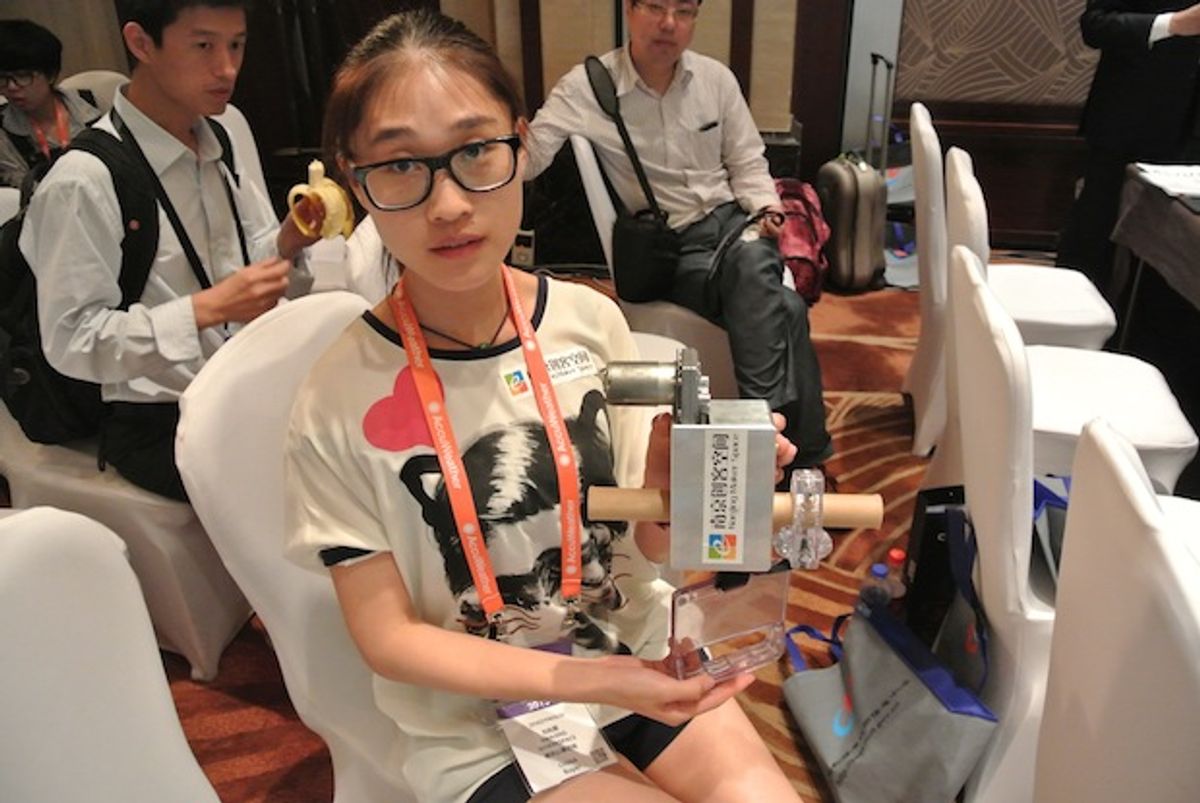On the last day of CESAsia, nervous representatives from maker spaces and universities located in Shanghai and surrounding cities trooped on stage to make presentations to a panel of judges. It was a scene that would be familiar to many makers and hobbyists in other countries, but it was something new to China, as it was the country’s first maker contest. But it won’t be the last, if the rapid growth in the number of maker spaces there is any indication. This growth is now being officially supported by the Chinese Ministry of Industry and Information Technology (MIIT).
“Domestic maker spaces started in 2010, and it was a very niche activity,” said Rocky Zheng, head of the Nanjing Maker Space, through a translator before the judging began. “Until 2013, China had only 15 spaces, then it began booming. By April 2014, there were over 100 spaces.”
Projects presented during the event included: a headset for bathing dry eyeballs in vapor containing traditional Chinese medicines; a device for harvesting energy from straphangers being swung back and forth as buses and subway trains lurch along their routes; a system that would allow a person to have their text messages appear at the bottom of a television screen; potters clay that had been reformulated so it can be extruded from a modified 3-D printer capable of rendering complex ceramic designs; and an electronic lock that was opened by coded light signals from a smartphone app. The winner was a team from Shanghai that developed a system for warning a driver when he or she is straying out of their lane.
The MIIT has started supporting maker spaces and small tech startups in part by creating an online platform for makers to exchange information about projects. It has also begun raising funds via crowd funding to defray the costs of commercializing projects. The ultimate goal is boosting China’s ability to be technologically creative. Some of the speakers at the contest representing the government seemed to consider makers as nascent business entrepreneurs, and maker spaces as commercial incubators that would feed directly into industry. This was reflected in a second round of the contest, in which teams from small—and not-so-small—companies presented new product ideas such as an automated frying pan. We also saw smart systems for reducing office energy use—more the kind of thing that elsewhere would be seen at a Y Combinator-style event rather than a maker contest.
But several speakers were quick to make the point that while commercial products can come out of maker spaces, it would be a mistake to view them, and the people working in them, so narrowly: “We try to best turn our creativity and hobbies into reality. We may be able to commercialize in some areas, but in others we are simply playful in our effort. Makers go beyond the scope of entrepreneurs in our effort,” says Nanjing Maker Space’s Zheng.
Currently, the goal is to create maker spaces in the provinces, spreading them out from their current concentration in and near cities such as Beijing, Shanghai, and Shenzhou. If this can be done with the same maker spirit espoused by Zheng, China could indeed be seeding a creative tech renaissance.
Stephen Cass is the special projects editor at IEEE Spectrum. He currently helms Spectrum's Hands On column, and is also responsible for interactive projects such as the Top Programming Languages app. He has a bachelor's degree in experimental physics from Trinity College Dublin.



